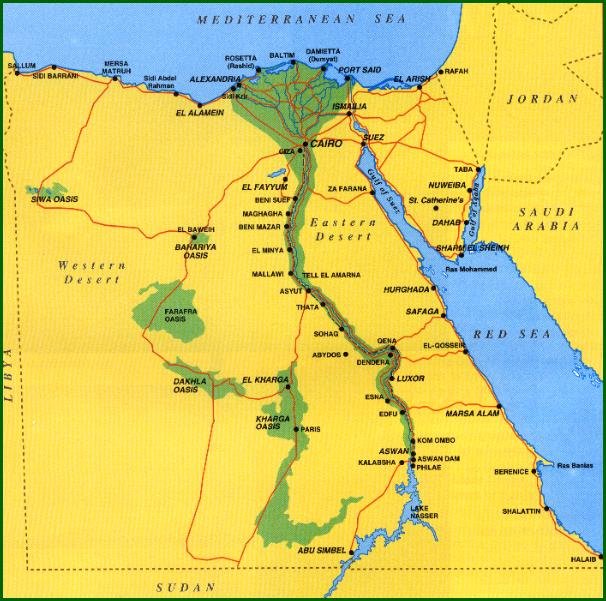Roaches not Cheetahs -- Chapter 1 of 'The Mystery of Capital & The Social Construction of Reality'
Hernando de Soto is a Peruvian economist who specializes in black and grey markets, not because he’s obsessed with criminal activity per se, but because in most developing countries the informal economy is larger than the official legal economy. Many times bigger in many cases.
There’s a whole narrative about “economic hit men” and the ways that West have deliberately kept these countries poor, even after open colonialism ended. It’s always easier to blame an obvious villain than it is to discover structural causes, especially when those structures grew gradually over hundreds of years, literally by trial and error, as precedents grew out of individual court cases. That’s right; de Soto’s position is that the cause of poverty is the law -- not in a conspiratorial way, but in an ignorant and unconscious way.
One of the reasons that I came here is that we economists and lawyers, we have exhausted our capacity to convince. We have exhausted our capacity of seeing the big picture. That is why I got extremely confused when I saw the vigorous way in which certain philosophers—which includes Professor John Searle—were looking at these issues. They were looking at these issues in ways that made a lot of sense to people like myself; that bring it all together the way it was in the eighteenth and nineteenth century, and that we seem to have lost somewhere on the way.
What de Soto doesn’t say is that it is precisely Adam Smith’s famous division of labor that creates the intellectual silos that get in the way of our understanding. Biologists know very well that specialization is a double-edged sword.

[image from conservation organization cheetah.org]
Cheetahs are the fastest-running animals on the planet, but their specialization for speed comes at a high cost. They are so light in their bone and muscle structure that they are unable to defend their own kills from other more heavy-duty predators like lions and hyenas. Their claws are blunt like a dog’s, which means they can’t hide their kills up in a tree like a leopard can. In the same way, becoming a specialist economist or lawyer causes us to lose the bigger picture.
The technological development of the blockchain, which is less than a decade old, has pulled our focus back, allowed us to begin to ask basic questions again. Sure, there are levels of expertise, but in a new enough community, everyone is an amateur, a generalist, scuttling about looking for any information. This is a good time to be learning about how property works. Property does not consist of assets alone; property must also include the legal infrastructure that connects assets and the communities of humans who hold those assets to the ecosystem of commerce.
De Soto is clear about why Western-style market reforms in developing countries have failed.
What happens is that you cannot take a legal system from one country and just pass it to another one, because there is no such thing as a rule vacuum in any developing country. There are rules in all countries. The first thing that people do is create rules. What you have to make sure of when you bring in modernity is to find out what the grassroots rules are.
In other words, the IMF and those institutions fail not because they are corrupt or evil but because they don’t listen. They assume they know what they’re doing, which causes them to put irrelevant things into place, which people ignore in favor of what they’ve already been doing. He supports this with examples from several countries, with Egypt being my favorite.
Because there’s only the one big river flowing through the country, and a few oases, there’s a limited amount of agricultural land, and it’s not just dumb to put buildings on that valuable land, it’s actually unconstitutional.
We say, “You’re absolutely right, it’s an outrage. Nevertheless, we have quantified it, and we have found that in Egypt since the 1950s you have built four million seven hundred thousand buildings on agricultural land, all of which are not only not legal, but perfectly unconstitutional. Four million seven hundred thousand buildings, at our evaluation of about 10,500 dollars per building. When you add up how much mortar, how much bricks, how much iron, without the furniture, without the factory that is hidden in the house (in 50 to 60 percent of them), you’ve got fifty billion dollars of dead capital, things on which you cannot, to use Professor Searle’s language, impose functions. You cannot use them as credit, you cannot use them as a guarantee, you cannot use them as collateral, you cannot use them as some kind of token.
And because of the existing law, those illegal assets can NEVER be converted into capital. They are trapped in a legal limbo, along with their holders (I don't say owners, because without a title, they don't legally own it).
This is the biggest challenge that a blockchain financial system faces. In order to be more effective than the current system of banks and fiat money, it needs to flexibly interface with hundreds – thousands – of different local systems of finance and governance. Humility in the process of growing these connections is key.
We have to be roaches, not cheetahs.
This post is Chapter 1 of a series, the master post for which is here.
REFERENCES
https://en.wikipedia.org/wiki/Hernando_de_Soto_Polar
https://en.wikipedia.org/wiki/Confessions_of_an_Economic_Hit_Man

Excellent post RH!
One of the challenges is that a redistribution of wealth and ownership in the sense of giving proper legal title to things of value people already own in all practical sense, often goes against strong, organized vested interests in the countries discussed by DeSoto. The transparency that @dan and you and others talk about (e.g., steemd is contrary to the interests of the local officials, who are making sawdust. (``Large tree, much sawdust when cut, nobody bothers to look where sawdust is going. They look after the lumber. Yet sawdust is still wood.'')
So more likely than not, they may very well refuse to interface with the blockchain at all. That was the underling issue in China, for example. (As for voting to change that, ``Matters more who counts the votes than who votes . . .'' goes a saying.)
The organizing ability of blockchains, by creating trust among those for whom organization was too costly, is what gives macroeconomic value to platforms like steemit. For the microeconomic value comes from transaction cost reduction. (This is necessary for existence of macroeconomic value, but does not otherwise determine it.)
Yet many technologies, like Hashgraph, or just newer, smaller firms entering the market also reduce transaction costs. Existing institutions face competition from organization of those who were before unorganized. The flexibility of the blockchain and its transparency, what gives it value to users, is precisely what makes it anathema to current local officials in many countries. The only reason they are still in their posts, as Robert Heinlein once wrote, is because those not already organized cannot organize with existing technology and without that they cannot play on the same terms and actually win . . .
I saw your December column in IGMS. Excellent to see promotion of Steemit in more traditional publications! (I'm weighing the pros and cons of doing the same in the academic journal where I have a column and publish occasionally. (First, I suspect, I would have to write more things of this sort.
Thank you @tibra. Your writing style reminds me a bit of Parker Palmer, who bounces form example to analogy to metaphor in a fluid kind of way. I feel like I need an outline to keep up.
Are you an IGMS subscriber? That would be a first. I pitched my editor on accepting Steem for subscriptions, but I don't think I got anywhere with that. We'll probably have to build our own magazines.
And yeah, I've been evangelizing Steemit.com to anyone who will listen. In fact, I was planning to crash a self-publishing panel / discussion at a local bookstore tonight, but it's too snowy out.
Steem for subscriptions would be excellent! Every step counts. (Patrick Byrne did a great thing by having Overstock take Bitcoin.) Actually, I'm getting ready a story to submit. I'm challenging myself to keep it PG. (I need to learn how to write for a younger audience. Not easy, because negative emotion plus distancing tricks, like distant past or far future, is what best holds attention. Tosca must jump; Turiddu must fall. A happy ending is always possible, but first things first.)
I've been thinking about EOS (webassembly on blockchain) or Steem Media Tokens as free, open source publishing platforms. Including possibly for science fiction and fantasy. Yet the largest market up for grabs in the near future is the academic market. Very reliable source of value, if captured. Universities would be paid for open access, rather than them paying out billions collectively. Open access gets much more reads and citations. An easy pitch. In mathematics, free, open but reliably archived peer review has long been on the wish list of just about everybody.
LaTeX on Steemit would have to happen, first. Some kind of utopian.io or busy.org interface with Overleaf-like functionality. I think Steemit needs that. Then journals could switch over. (I'm recruiting programmers for this among the mathematics community.)
Research needs better funding. (For example, hours ago a funding proposal received discussed months ago .... dozens of pages of paperwork ... to be double checked and submitted for approval ... tomorrow at latest ... Large projects are too much characterized by the 7-steps plan: 1) Talk, 2) Procrastinate, 3) Rush, 4) Fail, 5) Assign blame to those not responsible, 6) Reward the not involved, 7) Repeat.)
Blockchain and the right interfaces might change all that. It's worth evangelizing, I agree. The question at the moment is how to do that effectively, considering the Steemit trending page is full of spam and drama that is less than polite. No small investment right now will compete with the spammers. (I didn't invest.) The solution might be, I think, a Busy.org type overlay or Steemengine organizing interfaces, that can be easily modified by any publisher for their own deployment. I'm watching the later, to see if quality improves over time. Monetized arXiv or bioRxiv to the moon! No, Mars! No, Jupiter! (Is that the right language to use to trend?)
Good luck with your submission. My January column just went up today.
http://www.intergalacticmedicineshow.com/cgi-bin/mag.cgi?do=columns&vol=randall_hayes&article=025
Coincidentally, it addresses your point about memorability from a different angle, namely Pascal Boyer's work on logical violations being more memorable than logical confirmations in religion and folklore.
Very nice post @photbot. Informative and enlightening!
I am gonna follow for more.
Thanks!